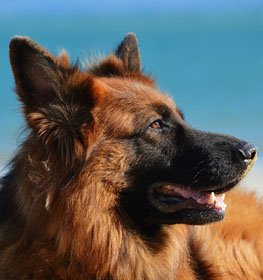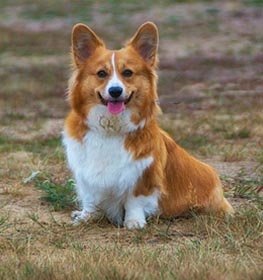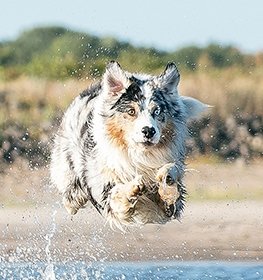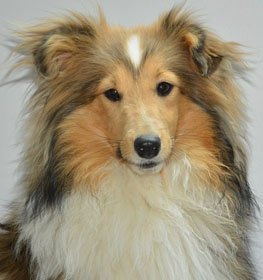Belgian Tervuren Information & Dog Breed Facts
Collection of all the general dog breed info about Belgian Tervuren so you can get to know the breed more.
| Group | Pastoral / Herding Dogs |
|---|---|
| Popularity Rank | 103 |
| Reviews | 1 |
| User Ratings | |
|
Compare the Belgian Tervuren With Other Dogs
Select at least one dog breed to make the comparsion. | |
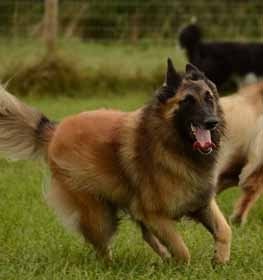 | |
| Origin | |
|
Common Names & Aliases
What other names is a Belgian Tervuren known by? Discover all traditional, regional and informal names used for this breed. | Tervuren |
|---|---|
|
Breed Classification
What type of dog breed is a Belgian Tervuren? Learn about its genetic classification and breeding category. | Purebred |
|
Size Classification
What size category is a Belgian Tervuren? Learn how big the Belgian Tervuren breed typically grows. | Large |
|---|---|
|
Weight Statistics
How much does a Belgian Tervuren weigh? Discover typical weight ranges for adult males and females of the Belgian Tervuren breed. | Male: 65-75 pounds (29-34 kg), Female: 60-70 pounds (27-32 kg) |
|
Average Weight
What is the average weight of a Belgian Tervuren? | Male: 70 pounds (31.5 kg), Female: 65 pounds (29.5 kg) |
|
Height
How tall is the Belgian Tervuren? Belgian Tervuren height: | Male: 24-26 inches (61-66 cm), Female: 22-24 inches (56-61 cm) |
|
Average Height
What is the average height of a Belgian Tervuren? | Male: 25 inches (63.5 cm), Female: 23 inches (58.5 cm) |
|
Price Range
How much does a Belgian Tervuren puppy cost? Find current market prices and factors affecting Belgian Tervuren costs. | $1200-$1400 If you choose to purchase the Belgian Tervuren, you should know that the mentioned amount of money is an average of the collected data from breeders’ sites and puppy finder places. If you have a Belgian Tervuren for sale, please advertise it on a reliable website to make sure the Belgian Tervuren gets to a happy place. |
|---|---|
|
Availability
How easy is it to get a Belgian Tervuren? How many Belgian Tervuren are there in the world? | Frequent: The Belgian Tervuren is easier than average to get. Maybe there is some risk of overbreeding, as it is a popular breed. Due to its popularity, inbreeding may occur. A new study shows that inbreeding contributes to the incidence of disease and health problems. So be careful and seek the help of an experienced person or a professional, in making your decision. |
|
Intelligence Rating
How intelligent is a Belgian Tervuren? Discover the Belgian Tervuren's intelligence ranking and learning capabilities. | Very smart: Belgian Tervuren is an excellent dog breed. You can teach them many tricks and commands. The limit is your creativity. They understand and memorize new commands in 5-15 repetitions. This breed obeys the first command 85% of the time or better.
The Belgian Tervuren is one of the top breeds in the dog intelligence ranking. |
|---|---|
|
Training Difficulty
How easy is it to train a Belgian Tervuren? Learn about the Belgian Tervuren's trainability and response to training methods. | Belgian Tervuren dogs are very easy to train. They easily find out the association between commands and actions. |
|
Watchdog Rating
How good is a Belgian Tervuren as a watchdog? Learn about the Belgian Tervuren's alertness and guarding instincts. | Belgian Tervuren dogs are one of the best watchdogs. Their main job is to observe and they're very consistent in their effort. The best vocal cords and sense of hearing belong to them. Usually, they're very territorial and protective about their property, so the Belgian Tervuren dogs will alert you if they sense something different. |
|
Territorial Protection
Is a Belgian Tervuren protective of its territory? Learn about the Belgian Tervuren's guarding instincts and behavior. | Belgian Tervuren dogs strongly protect their territory. This breed is a complete security guard, so you don't have to be afraid in case of danger. |
|
Personality Traits
What personality does a Belgian Tervuren have? Learn about characteristic Belgian Tervuren temperament and behavior traits. | EnergeticProtectiveAlertIntelligentLoyalAttentive |
|---|---|
|
Sensitivity Level
How sensitive are they? Belgian Tervuren sensitivity: | They are a little bit more sensitive than other dog breeds. Soft punishment affects them emotionally. Belgian Tervuren dogs don't tolerate irregular daily routines, noisy households, and frequent guest visits really well.
They are receptive to their owner's emotions and make wonderful family companions. |
|
Affection Level
How affectionate are they? Is a Belgian Tervuren a good family dog? | Average to High: Belgian Tervuren dogs are highly affectionate dogs. They like being involved in the family's life. This breed isn't considered an aloof dog. |
|
Social Needs
How much social interaction does the Tervuren need? Belgian Tervuren social needs: | Belgian Tervuren dogs are a social breed. They enjoy being around people or other animals. This breed doesn't tolerate being left alone. |
|
Impulse to Wander or Roam
How likely is the Belgian Tervuren to run away? Does this breed explore or wander a lot? Does Belgian Tervuren roam? | Belgian Tervuren dogs are not the biggest explorers. They have low wanderlust potential. Low chance of escaping from home with this breed. |
|
Prey Drive
Do this canine have a strong prey drive? Does Belgian Tervuren have high prey drive? | Belgian Tervuren dogs have a higher impulse to chase and catch something than other dog breeds. Cats or any other small animals might be in danger. It's a natural instinct, doesn't necessarily mean that Belgian Tervuren dogs are aggressive. Better to keep this breed on a leash. |
|
Barking Frequency
Does a Belgian Tervuren bark a lot? Learn about typical Belgian Tervuren vocalization patterns and triggers. | A lot: Belgian Tervuren is a particularly loud breed. They often enjoy barking and howling loudly. If you want a quiet dog, not the best choice.
The main triggers for barking are fear, attention, alarm, boredom, greeting, separation anxiety, compulsive barking, and defense. |
|---|---|
|
Playful Nature
How playful is a Belgian Tervuren? Understand the typical play drive and energy level of the Belgian Tervuren breed. | The Belgian Tervuren is a highly playful breed. Excited barking and sometimes nipping will alert you to play. |
|
Apartment Adaptability
Can a Belgian Tervuren live in an apartment? Learn about the Belgian Tervuren's suitability for apartment living. | It is not the best choice if you want to keep them indoors, however, with careful exercise and several walks a day, they will tolerate the indoor environment, so it is possible to keep Belgian Tervuren indoors. |
|
Lifestyle Adaptability
How adaptable is a Belgian Tervuren to lifestyle changes? Learn about the Belgian Tervuren's flexibility to new situations. | Belgian Tervuren dogs adapt very well to lifestyle changes and basically all living environments. They don't mind moving from one place to another with their owner. |
|---|---|
|
Alone Time Tolerance
Can a Belgian Tervuren be left alone? Learn about the Belgian Tervuren's tolerance to solitude. | Belgian Tervuren dogs do best when a family member is at home during the day or if their workplace is dog-friendly so they can take the dog at work. |
|
Bite Risk Assessment
What is a Belgian Tervuren biting potential? Learn about the Belgian Tervuren's bite risk factors. | Low 🔽 The Belgian Tervuren has a low chance of biting somebody. Top reasons for dog bite: protection, pain, excitement, herding instinct, being provoked. (Data based on the available online bite statistics.) |
|---|---|
|
Mouthing Tendency
Is a Belgian Tervuren mouthy? Learn about the Belgian Tervuren's tendency to use mouth during play. | Belgian Tervuren dogs have an average tendency to nip, chew, playbite, or herd people. It's a common habit during puppyhood, not aggressive behavior. These "bites" don't hurt, but Belgian Tervuren dogs need to be taught a good attitude. |
|
Bite Strength Rating
How strong is a Belgian Tervuren bite? Learn about the Belgian Tervuren's bite force measured in PSI. | Between 200 and 400 PSI ⏺ Belgian Tervuren bite force: Ordinary. Bite force Belgian Tervuren measurements typically fall within the range of 200 to 400 PSI. The bite force of a Belgian Tervuren is considered ordinary when compared to other dog breeds, but it is still quite powerful. This Belgian Tervuren bite force PSI can cause bite wounds. Belgian Tervuren bite PSI is not something that should be feared if the dog is well-trained and managed. To avoid any issues, it's essential to learn how to train a Belgian Tervuren puppy not to bite from an early age.
The Belgian Tervuren, and many others, have a fearsome presence because they have significant jaw strength, so it is important not to anger the dog and have it around strangers until it is fully trained. However, they are usually quite calm and good companions, they work well in families and are easy to care for. In conclusion, while the Belgian Tervuren bite force is certainly an interesting aspect of the breed, it is important not to let it overshadow the many other reasons why these dogs are so loved and respected. With proper training and socialization, a Belgian Tervuren can be a loyal and protective companion for your family. |
|
Average Lifespan
How long does a Belgian Tervuren live? Learn about the typical lifespan of the Belgian Tervuren breed. | 12-14 years The average lifespan of Belgian Tervuren: 13 years |
|---|---|
|
Climate Tolerance
How well does a Belgian Tervuren handle different weather? Learn about the Belgian Tervuren's climate adaptability. | Tolerates warm and cold weather Dogs that tolerate hot and cold weather are typically those that have a double coat of fur. Dogs with a double coat of fur have a layer of fur that insulates their skin and helps protect them from the cold and the heat. |
|
Health Concerns
What health issues are common in a Belgian Tervuren? Discover typical conditions affecting the Belgian Tervuren breed. | The Belgian Tervuren is a healthy breed, but there are certain health issues that you should check with your vet regularly. |
|
Vet Care Frequency
How often does a Belgian Tervuren need vet visits? Learn about the Belgian Tervuren's veterinary care requirements. | Average The Belgian Tervuren should have a complete physical check-up at least once per year. If your dog shows any symptoms, call your veterinarian. |
|
Energy Rating
How energetic is a Belgian Tervuren? Understand daily activity needs of the Belgian Tervuren breed. | Belgian Tervuren dogs are high-energy dogs. An active lifestyle makes them happy. |
|---|---|
|
Activity Requirement / Exercise Need
How much exercise does a Belgian Tervuren need? How much exercise do Belgian Tervuren dogs require per day?
Do Belgian Tervuren dogs need a lot of exercises? | Belgian Tervuren dogs need a lot of exercises. Long walks should be on a daily schedule. If you live an active life, this breed can be a good choice for you. |
|
Sleeping Need
How much sleep does the Belgian Tervuren breed need? | Belgian Tervuren dogs are quite energetic dogs and they don't spend too much time with sleeping. If you live an active life, this breed can be a good choice for you. |
|
Obesity Tendency
Is a Belgian Tervuren prone to weight gain? Learn about the Belgian Tervuren's obesity risks. | Low to Average: The Belgian Tervuren has a low to the average risk for obesity. To make your dog happy and fit, feed him with quality dry dog food and live an active life together. Try to find the happy medium between exercise and feeding.
If you notice any weight gain, consult your veterinarian and make a diet plan. Reduce unhealthy food and snacks, and measure the Belgian Tervuren weight regularly. |
|---|---|
|
Food Consumption
How much food does a Belgian Tervuren need daily? Learn about the Belgian Tervuren's feeding requirements. | 2 to 3 cups of a high-quality dog food a day. |
|
Allergy Friendliness
Is a Belgian Tervuren hypoallergenic? Learn about the Belgian Tervuren's suitability for allergy sufferers. | No Belgian Tervuren dogs don't do well with allergy sufferers by causing allergic reactions. Some dog breeds are even considered to higher possibility of an allergic response. Coat type isn't necessarily relevant, because most people are allergic to dander (flakes on the dog's skin) or saliva, not actually to dog hair. |
|---|---|
|
Coat Colors
What colors does a Belgian Tervuren come in? Discover all possible Belgian Tervuren color variations. | Black Cream Fawn Brindle |
|
Grooming Requirements
How much grooming does a Belgian Tervuren need? Learn about Belgian Tervuren coat maintenance requirements. | Average: The Belgian Tervuren requires average grooming effort. Cutting the dog's hair by a professional groomer isn't essential. Brushing the dog's coat is useful to reduce shedding. Ears and eyes should be cleaned regularly to avoid infections. Don't skip the seasonal flea treatment too. Dog nail trimming and dog bath can be helpful sometimes. Check the local pet store for dog grooming supplies and find the best dog shampoo to keep its coat healthy and give your dog a pleasant experience of a dog bath. If you don't have the time, skill, or money to take care of your Belgian Tervuren, search for a dog groomer or clipping service in your area and book an appointment. Maybe you're lucky to have a dog boarding service that includes grooming or walk-in dog bath places nearby. |
|
Drooling Tendency
Does a Belgian Tervuren drool a lot? Learn about the Belgian Tervuren's drooling habits. | The Belgian Tervuren is a perfect example of a very low drooling tendency. If you're disgusted by slobber spots on your clothes, the Belgian Tervuren could be a perfect choice for you. Drooling is the unintentional saliva flowing outside of the mouth. It can be completely normal or a sign of a health problem. Certain dog breeds drool minimum compared to others, just like the Belgian Tervuren.
If you notice any change in your dog's drooling habit, you should contact a vet as soon as possible. |
|
Stinkiness Rating
Does a Belgian Tervuren smell bad? Learn about the Belgian Tervuren's natural odor levels. | Medium ⏺ The Belgian Tervuren has an average chance of bad smell. Top reasons for dog stinkiness: infection of bad tooth/ear/skin folds, gas attacks. |
|
Coat Characteristics
What type of coat does a Belgian Tervuren have? Learn about the Belgian Tervuren's fur characteristics. | ThickDouble |
|
Bathing Needs
How often does a Belgian Tervuren need baths? Learn about the Belgian Tervuren's bathing requirements. | 3-4 weeks More often than average. These dog coats tend to be longer, softer, and oilier than short-haired breeds. While a good bath every now and then is a great way to keep your buddy from becoming overly smelly, be mindful about overbathing.
Bathing will wash away your dog’s natural oils, while a simple brushing every few days should keep them clean. |
|
Shedding Level
How much do Belgian Tervuren dogs shed? How to control, reduce and prevent the shedding of the Tervuren? Do Belgian Tervuren dogs shed a lot? | Belgian Tervuren dogs shed moderately. It's a natural process of the hair growth cycle. Regular brushing reduces the amount of hair that sheds. It mostly depends on their health status and breed type. |
|
Child Compatibility
Is a Belgian Tervuren good with children? Learn about the Belgian Tervuren's behavior around kids of different ages. | Belgian Tervuren dogs are kid-friendly dogs. This breed is a good choice if you have children. |
|---|---|
|
Pet Compatibility
How well does a Belgian Tervuren get along with other pets? Discover the Belgian Tervuren's compatibility with other animals. | Belgian Tervuren dogs usually don’t get on well with other pets. |
|
Stranger Friendly
Are they aggressive or friendly towards/with strangers? Belgian Tervuren temperament with other people: | Belgian Tervuren dogs are not the most stranger-friendly dogs. |
|
Cat Friendly
How well do Belgian Tervuren dogs get along with cats? Are they good with kittens? What is this fido's temperament with cats? Can they be good with cats? Can the Belgian Tervuren breed live with a cat? | Belgian Tervuren dogs are not the most cat-friendly dogs. |
|
Dog Friendly
Is Belgian Tervuren good with other dogs? Are they dog-friendly dogs? How well do Belgian Tervuren dogs get along with other dogs? | Belgian Tervuren dogs are average friendly towards other dogs. |
|
Good For First Time Owners
Is Belgian Tervuren breed good for first-time owners? Do they make a good dog for novice owners? Is Belgian Tervuren breed suitable for first-time owners? | Yes Belgian Tervuren dogs are good for novice owners, due to their easy-going personality. |
|
Office Friendly
Are Belgian Tervuren dogs good office canines? Do Belgian Tervuren dogs make good office-friendly pets? Can they be office dogs? | No Belgian Tervuren is not the best dog breed for office environment. |
|
Senior Citizens Friendly
Are they senior citizens friendly dogs? How well do Belgian Tervuren dogs get along with the elderly people? What is the Tervuren temperament with senior people? Are Belgian Tervuren dogs good for elderly owners? | Belgian Tervurens are usually recommended for elderly people. |
|
Service Dog Capability
Can a Belgian Tervuren be a service dog? Learn about the Belgian Tervuren's service work potential. | Not really This breed generally not used as a service dog. A service dog is a term used in the USA to refer to any type of assistance dog specifically trained to help people who have disabilities, such as visual impairment, hearing impairments, mental disorders, seizures, mobility impairment, and diabetes. Service dogs are protected under the ADA (Americans with Disabilities Act).
Belgian Tervuren is not the best breed for service purposes. |
|---|---|
|
Therapy Work Suitability
Is a Belgian Tervuren good as a therapy dog? Learn about the Belgian Tervuren's therapy work aptitude. | Not really This breed is generally not used as a therapy dog. A therapy dog is a dog that might be trained to provide affection, comfort, and love to people in hospitals, retirement homes, nursing homes, schools, hospices, disaster areas, and people with anxiety disorders or autism.
Belgian Tervuren is not the best breed for therapeutic purposes. |
|
Scent Detection Ability
Is a Belgian Tervuren good at detection work? Learn about the Belgian Tervuren's scenting abilities. | Not really They are not typically employed for this type of work, but there may be exceptional cases. A detection dog or sniffer dog is a dog that is trained to use its senses (mostly its smell) to detect substances such as explosives, illegal drugs, wildlife scat, currency, blood, and contraband electronics such as illicit mobile phones.
Belgian Tervuren is not the best breed for detection purposes. |
|
Search & Rescue Potential
Can a Belgian Tervuren do search and rescue? Learn about the Belgian Tervuren's SAR capabilities. | Not really This dog breed is not typically used as a search and rescue dog. The use of dogs in search and rescue (SAR) is a valuable component in wilderness tracking, natural disasters, mass casualty events, and locating missing people.
The Belgian Tervuren is not the best breed for SAR purposes. |
|
Maritime Work Ability
Is a Belgian Tervuren good on boats? Learn about the Belgian Tervuren's maritime capabilities. | Not really Belgian Tervuren breed usually doesn't like being on a boat. Boat dogs were typically bred for their strength, stamina, and water resistance, as they were often required to perform tasks such as pulling in fishing nets, and jumping into the water to retrieve ropes or lines, or helping to move cargo. Sailor dog is a type of dog that was bred to accompany sailors on their voyages. They were typically used for three purposes: as a working dog, a watchdog, and as a companion. A boat dog is a term used to describe a type of dog that was traditionally bred and used as a working dog on boats. |
|
Draft Work Capability
Can a Belgian Tervuren pull carts? Learn about the Belgian Tervuren's drafting abilities. | Not really A drafting dog or draft dog is a dog bred and used for cart pulling. Dogs bred for this work have strong builds and qualities that are needed, strength and determination.
Belgian Tervuren is not the best breed for drafting purposes. |
|
Military Service Background
Was a Belgian Tervuren used in military service? Learn about the Belgian Tervuren's military history. | Not really In history, this breed was not really used for combat dog. |
|
Puppy Litter Size
How many puppies does a Belgian Tervuren usually have? Learn about typical litter sizes. | 6-10 puppies |
|---|---|
|
Pregnancy Duration
How long is a Belgian Tervuren pregnant? Learn about the Belgian Tervuren's gestation period. | 60-64 days Reproductive cycle of the female Belgian Tervuren: The first period called Proestrus lasts for about 9 days.
During this time the females start to attract males. You can notice by swelling vulva and bloody discharge. The second part is the Estrus when the female is receptive for the male. It lasts for about 3 to 11 days. The sign of the proestrus part is the soft and enlarged vulva. The discharge decreases and lightens in color. The third part is the Diestrus. Normally, it occurs around day 14. In this period the female’s discharge changes for vivid red and coming to its end. The vulva returns to average, and she will no longer permit mating. The fourth part called the Anestrus. The time frame between heat periods normally lasts about six months. |
|
Breeding Frequency
How often can a Belgian Tervuren have puppies? Learn about safe breeding intervals. | Once a year. More frequent breeding is not healthy. It is very important not to buy a dog from a puppy mill, where the needs of the pups and their mothers are ignored. It's an inhumane high-volume dog breeding facility, where puppies born several times a year. |
|
AKC Classification
What AKC group is a Belgian Tervuren in? Learn about the Belgian Tervuren's AKC classification. | Recognized by the American Kennel Club in 1959 as a Herding breed. |
|---|---|
|
FCI Classification
What FCI group is a Belgian Tervuren in? Learn about the Belgian Tervuren's international classification. | Not recognized by FCI. |
Belgian Tervuren Pros and Cons
- Intelligence Rating: Very smart: Belgian Tervuren is an excellent dog breed.
- Training Difficulty: Belgian Tervuren dogs are very easy to train.
- Drooling Tendency: The Belgian Tervuren is a perfect example of a very low drooling tendency.
- Obesity Tendency: Low to Average: The Belgian Tervuren has a low to the average risk for obesity.
- Watchdog Rating: Belgian Tervuren dogs are one of the best watchdogs.
- Impulse to Wander or Roam: Belgian Tervuren dogs are not the biggest explorers.
- Lifestyle Adaptability: Belgian Tervuren dogs adapt very well to lifestyle changes and basically all living environments.
- Child Compatibility: Belgian Tervuren dogs are kid-friendly dogs.
- Senior Citizens Friendly: Belgian Tervurens are usually recommended for elderly people.
- Good For First Time Owners: Belgian Tervuren dogs are good for novice owners, due to their easy-going personality.
- Allergy Friendliness: Belgian Tervuren dogs don't do well with allergy sufferers by causing allergic reactions.
- Alone Time Tolerance: Belgian Tervuren dogs do best when a family member is at home during the day or if their workplace is dog-friendly so they can take the dog at work.
- Cat Friendly: Belgian Tervuren dogs are not the most cat-friendly dogs.
- Office Friendly: Belgian Tervuren is not the best dog breed for office environment.
Belgian Tervuren History
One of the four Belgian Sheepdogs
The Belgian Shepherd, also known as the Belgian Sheepdog or Chien de Berger Belge, is a medium-sized Belgian herding dog. The long-haired black Groenendael, the rough-haired fawn Laekenois, the short-haired fawn Malinois, and the long-haired fawn Tervuren are produced in four unique variants based on coat type and colour. In the United States, the American Kennel Club considered the four varieties to be independent breeds. The Tervuren variety has a double coat which is typically fawn in colour with black overlay and with black extremities, although grey with black is also seen sometimes.
Origins
Belgian Shepherds, like comparable Western European breeds like the Bouvier des Ardennes, the Dutch Shepherd, and the German Shepherd Dog, are descended from a common type of herding dog, and for centuries they were employed by Belgian shepherds. Unlike in other European countries, where shepherd breeds were standardized and breeders worked to preserve their breeds throughout the 19th century, the Belgian Shepherd had become obsolete and was on the verge of extinction by the end of the century. The Club de Chien Berger Belge was founded in 1891 with the goal of preserving the kind, and a team led by Professor Adolphe Reul of the Cureghem Veterinary School conducted a field survey. Professor Reul discovered that the Belgian Shepherd type varied significantly in appearance since it had been developed for working capacity for a generation with little regard for shape. Professor Reul’s team assembled 117 specimens as part of their research and began the process of standardizing them into separate types. The Professor’s team initially divided the breed into six different varieties based on coat type and colour. Between 1892, when the first breed standard was drafted, and 1956, the Club de Chien Berger Belge recognized as few as two varieties and as many as eight varieties.
Further development & the breed’s job
Interest in the breed grew quickly, and it became clear that the Belgian Sheepdog, despite its origins as a shepherd or sheepdog, was a versatile animal. They were easily adaptable to a range of functions because of their keen intellect and facile trainability. Moreover, at the beginning of the 20th century, they were already working with police forces in Belgium, Paris, New York City, and New Jersey. The breed was also used as security guards by European border patrols.
However, interbreeding between distinct types was prohibited in 1905, but the interruptions created by World War I resulted in a drop in breed numbers, therefor in 1920 it was decided that matings between the variations should be allowed to conserve the breed and avoid inbreeding difficulties. After the Second World War, the breed’s viability was once again challenged, and in late 1945, it was determined to encourage cross-breeding between dogs of different kinds, and the Belgian Shepherd regained in numbers through careful breeding. However, it is important to highlight that during the two World Wars, Belgian Sheepdogs distinguished themselves on the battlefields, serving as message carriers, Red Cross dogs, and defence dogs. Since then, interest in the breed has continued to grow. They are still used in police work and in search and rescue as well as guide dogs for the blind and service dogs for the handicapped. They continue to prove themselves as a truly versatile breed while still exhibiting the devotion and beauty that first attracted notice in the 19th century.
Moreover, the present breed was established in 1956 and it defined the four types that exist today, the Groenendael, the Laekenois, the Malinois, and the Tervuren. The Tervuren variety is believed to have been created when a brewer, M. Corbeil, bred his fawn long-haired Belgian Shepherd pair, Tom and Poes, one of their kids was a long-haired fawn bitch named Miss, who was bought by an M. Deanhieux. According to experts, Miss then was bred with Duc de Groenendael, the Groenendael variety’s foundation sire, and the fawn progeny formed the Tervuren variety, named after the Tervuren location. The Tervuren variation is thought to be extremely hardy and healthy and many breeders in Europe utilize it to supplement the bloodline of other breeds, particularly the Groenendael.
Recognition
The Belgian Shepherd is recognized as a single breed with four unique types by the majority of national kennel organizations across the world, including the Société Royal Saint-Hubert and the Federation Cynologique Internationale. The American Kennel Club, for example, recognized the four variants as distinct breeds, which has caused some confusion among American breeders who breed from imported European stock. The Tervuren remains the second most popular one among the four, following the Groenendael. European Groenendaels in particular can produce Tervuren coloured puppies, which can be registered as Tervurens in most of the globe but would be disqualified in the United States.
Latest Belgian Tervuren Compares
Belgian Tervuren Names
How old is my Belgian Tervuren in human years?
You May Also Like
Rate The Belgian Tervuren Breed
Belgian Tervuren Comments, Reviews and Questions
- Gerardo
Dec 27, 2024, 7:52:00 PM:
Tengo 2 Tervueren, son perros muy inteligentes y nobles (conectan emocionalmente con sus dueños), además de ser excelentes guardianes.

